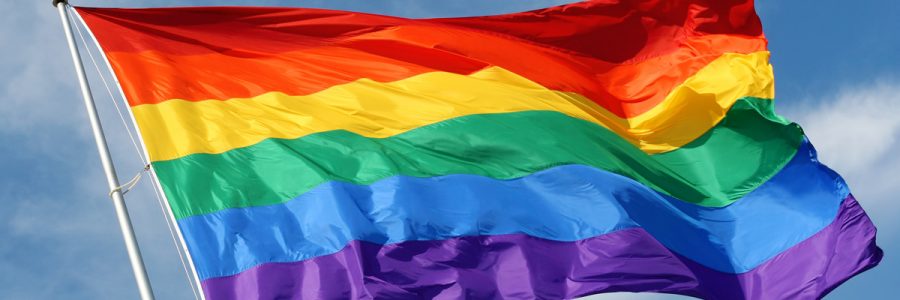SPECTRUM, Loyola’s lesbian, gay, bisexual, transgender, queer, intersex, asexual and allies (LGBTQIA+) student group on campus, launched its annual Sexual and Gender Diversity Awareness Week on Monday, March 23 and began the important discussion about sexual and gender identity issues. Members of the club hosted a kick-off to the event on the quad Monday, where they handed out free shirts and baked goods and began to engage the Loyola community and raise awareness about inclusion of LGBTQIA+ and other minority groups on campus.
One of the main goals for this week, according to Charmaine Bondoc, president of SPECTRUM for the spring 2015 semester, is to increase “understanding regarding different elements of what it means to be LGBTQIA+.” One of the most important things to understand, and one of the more confusing aspects of the community for allies, is the difference between one’s sexual identity versus an individual’s gender identity. The former is defined by biological sex, while gender identity is how one identifies him or herself.
“Someone could be anatomically female, but they may identify their gender as male,” Bondoc said. Today there are a number of gender identities that members of the LBGTQIA+ community might self-identify with, which is why it is often important to look at these variations on a spectrum scale.
Discussion on sexual and gender diversity has increased in recent years and has often been brought to the forefront of pop culture, with the quantity and quality of LGBT characters increasing on primetime television, according to a GLAAD study released in October of 2014. Shows such as “The Fosters” which features two lesbian mothers, or Canadian drama “Degrassi,” which won a Peabody Award in 2010 for the shows portrayal of a transgendered students journey, have opened many doors for LGBTQIA+ rights.
But, what GLAAD discovered in its research, and Bondoc has acknowledged as SPECTRUM president, is that there is still significant room for improvement in how LGBTQIA+ community members are represented in the media and in society as a whole.
GLAAD found that for the 2014-2015 primetime, scripted television season that 3.9 percent of series regulars will be lesbian, gay or bisexual, up slightly from the previous season’s count of 3.3 percent representation. While this is an obvious improvement, there is still a severe lack in the representation of characters that identify as transgender, as well as characters that vary in race.
Bondoc commented on this issue when asked what else still needs to be worked on in terms of progress for LGBTQIA+ awareness. She said, “A lot of people, even if they’re allies or within the LGBTQIA+ community, have difficulty understanding other, ‘newer’ labels such as pansexual or cisgender.” Cisgender refers to when someone’s gender identity matches with the sex they were born, while pansexuality refers to those who have an attraction to others regardless of their gender or sexual identity. These are only a few ways by which individuals can self-identify, proving that the community extends far past the letters defined by “LGBTQA+.”
This lack of understanding is precisely why Bondoc is most excited for the two discussion panels, because they serve as an important and necessary learning opportunity about the LGBTQIA+ community’s experiences and insights on our campus.
Angelica Puzio, director of student equity for SGA, spoke about the importance of educating the campus from an ally’s prospective. “Opening dialogues about sexual and gender diversity, particularly through an intersectional perspective, encourages our campus to be both educated and inclusive surrounding these issues while creating a space to really listen to the lived experiences of those most closely affected by them…and what could be more Ignatian than that?”
Despite support from allies like Puzio, SPECTRUM has faced challenges when it comes to aiming for inclusivity, particularly regarding approval of speakers for their events. Overall, Bondoc explained that the dialogue that has started on campus has been taken positively.
From an SGA perspective, Puzio noted that, “it’s important to note that dialogue and action, while they definitely interlock, don’t always look the same,” so events like this go deeper to actually engage and make progress instead of just discussing issues with no outcomes.
One of the greatest roadblocks to open discussion in the Loyola community regarding LGBTQIA+ topics is often in the very things we say. “Sometimes our biggest prejudices are just in the words that consist our daily vocabulary like calling something ‘gay’ in order to call something out as stupid or weird,” said Bondoc. Events like Sexual and Gender Diversity Awareness Week are created to not only educate, but to produce long-lasting discussion and stimulate acceptance on a broader scale.
Events supporting Sexual and Gender Diversity Awareness Week will run until Thursday, March 26. Tuesday night featured a panel on SPECTRUM’s club history which included one of the original moderators, Charles LoPresto, current moderator Natka Bianchini and Frank Golom who was the student that launched SPECTRUM’s programs at Loyola and would become the club’s first president. Wednesday night the club invited all members of the Loyola community to watch a screening of Pride, a film based on the true story of U.K. LBGT activists working to help miners during their strike in the summer of 1984, in the Newman Lobby at 7 p.m. The last SPECTRUM sponsored event will cap off the week of campus engagement with another panel, this time discussing the Intersection of Race and Sexuality at 8:30 p.m., Thursday, March 26 in Knott Hall B01.












































































































